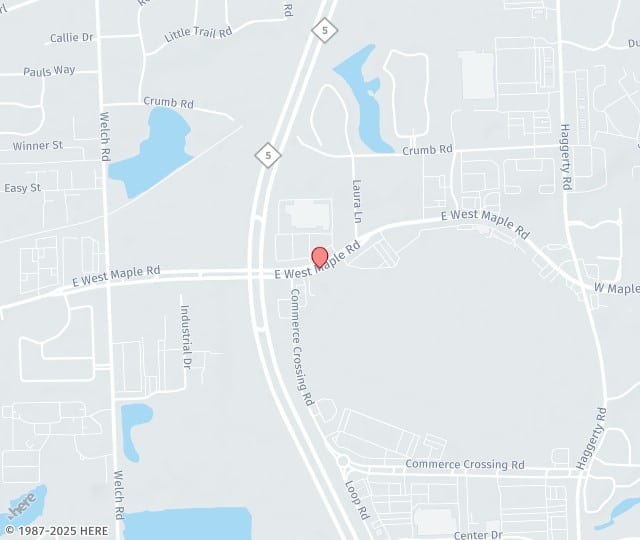
GLP-1 (glucagon-like peptide-1) and GIP (glucose-dependent insulinotropic polypeptide) medications have gained considerable recognition for their effectiveness in managing type 2 diabetes and promoting weight loss. However, recent research indicates that their therapeutic potential extends beyond these well-known applications, showing promise in improving heart health and treating sleep apnea. This article, based on a review of research papers, clinical trials, and medical reviews on GLP-1 and GIP medications, explores the mechanisms of action of these medications and delves into their potential in addressing these conditions.
Mechanisms of Action
GLP-1 and GIP are incretin hormones naturally produced in the body that play a crucial role in regulating blood sugar levels and metabolism. GLP-1 receptor agonists and dual GLP-1/GIP receptor agonists work by mimicking the effects of these hormones. They achieve this through various mechanisms:
- Stimulating insulin release: When blood sugar levels rise, these medications stimulate the pancreas to release more insulin, which helps lower blood sugar1.
- Inhibiting glucagon secretion: Glucagon is a hormone that raises blood sugar levels. GLP-1 receptor agonists suppress glucagon secretion, preventing further increases in blood sugar2.
- Slowing gastric emptying: These medications delay the rate at which food moves from the stomach to the small intestine, which helps regulate blood sugar levels after meals and promotes a feeling of fullness1.
- Increasing satiety: GLP-1 receptor agonists act on the brain to increase feelings of fullness and reduce appetite, contributing to weight loss1.
Effects on Heart Health
GLP-1 and GIP medications exert several cardioprotective effects, making them a promising option for individuals with or at risk of cardiovascular disease. These effects include:
- Improving glycemic control: By stimulating insulin secretion and inhibiting glucagon release, GLP-1 receptor agonists help regulate blood sugar levels, which is crucial for people with type 2 diabetes who are at increased risk of cardiovascular complications2.
- Lowering blood pressure: Studies have shown that GLP-1 receptor agonists can reduce blood pressure, a major risk factor for heart disease3.
- Reducing inflammation: Chronic inflammation plays a significant role in the development of atherosclerosis, a condition that leads to heart attacks and strokes. GLP-1 receptor agonists have anti-inflammatory properties that may help protect against cardiovascular disease4.
- Promoting weight loss: Obesity is a major risk factor for heart disease. GLP-1 receptor agonists promote weight loss by reducing appetite and increasing satiety, leading to a healthier body mass index (BMI)1.
Clinical trials have provided strong evidence for the cardiovascular benefits of GLP-1 and GIP medications. The SELECT clinical trial, for example, demonstrated that semaglutide, a GLP-1 receptor agonist, reduced the risk of major adverse cardiovascular events, including heart attack, stroke, and cardiovascular death, in overweight and obese individuals without diabetes by almost 20%5. Another study published in The New England Journal of Medicine found that tirzepatide, a dual GLP-1/GIP receptor agonist, was beneficial for people with heart failure with preserved ejection fraction and obesity5. These findings suggest that GLP-1 and GIP medications may play a crucial role in preventing and managing cardiovascular disease.
Effects on Sleep Apnea
Obstructive sleep apnea (OSA) is a prevalent sleep disorder characterized by repeated interruptions in breathing during sleep. It is often linked to obesity and can increase the risk of cardiovascular problems. GLP-1 and GIP medications have shown potential in treating OSA through the following mechanisms:
- Reducing weight: Weight loss is a cornerstone of OSA treatment. By promoting weight loss, GLP-1 and GIP medications can help reduce the severity of OSA and improve sleep quality6.
- Improving upper airway muscle function: Some studies suggest that GLP-1 receptor agonists may improve the function of the muscles that control the upper airway, potentially reducing airway collapse during sleep7. However, more research is needed to confirm this effect.
In December 2024, the FDA approved Zepbound (tirzepatide) for the treatment of moderate to severe OSA in adults with obesity. This approval marks the first drug treatment option for certain patients with obstructive sleep apnea and has the potential to significantly change the treatment landscape for this condition8. The approval was based on the SURMOUNT-OSA phase 3 clinical trials, a global, multi-center study comparing Zepbound to a placebo in adults with moderate-to-severe OSA and obesity9. The trials randomized 469 participants across various countries, including the U.S., Australia, Brazil, China, Czechia, Germany, Japan, Mexico, and Taiwan9. Participants received either Zepbound (10 mg or 15 mg) or a placebo once weekly for 52 weeks8. The primary measure of efficacy was the change from baseline in the apnea-hypopnea index (AHI), which measures the number of times a person stops breathing or breathes shallowly per hour during sleep8. The results showed that Zepbound was significantly more effective than the placebo in reducing AHI, with participants experiencing up to 29 fewer breathing disruptions per hour9. Furthermore, up to 50% of adults taking Zepbound no longer had symptoms associated with OSA after one year9.
Benefits Beyond Diabetes and Weight Loss
Beyond their effects on heart health and sleep apnea, GLP-1 and GIP medications may offer a range of other health benefits:
- Improving lipid disorders: GLP-1 receptor agonists can lower total cholesterol and triglycerides, which are risk factors for heart disease3.
- Improving fatty liver disease: Non-alcoholic fatty liver disease (NAFLD) is a common condition that can lead to liver damage. GLP-1 receptor agonists have shown promise in improving NAFLD by increasing fatty acid oxidation, decreasing lipogenesis (the production of fat), and improving hepatic glucose metabolism3.
- Reducing the risk of kidney disease: GLP-1 receptor agonists may help protect against kidney disease, a frequent complication of diabetes3.
- Delaying the progression of diabetes-related nephropathy: Studies suggest that GLP-1 receptor agonists can slow the progression of kidney damage in people with diabetes3.
- Neuroprotective effects: Emerging research suggests that GLP-1 receptor agonists may have neuroprotective effects and could potentially be used to treat neurodegenerative diseases like Alzheimer’s disease4.
Potential Side Effects
While generally safe and well-tolerated, GLP-1 and GIP medications can cause side effects in some individuals. These include:
- Gastrointestinal issues: The most common side effects are gastrointestinal, including nausea, vomiting, diarrhea, and constipation3. These effects are usually mild and temporary, often subsiding as the body adjusts to the medication.
- Low blood sugar (hypoglycemia): Hypoglycemia can occur, particularly when GLP-1 receptor agonists are used with other blood sugar-lowering medications like sulfonylureas or insulin1.
- Pancreatitis: In rare cases, GLP-1 receptor agonists have been associated with pancreatitis, an inflammation of the pancreas3.
- Medullary thyroid cancer: Studies in rodents have shown a link between GLP-1 receptor agonists and thyroid tumors. However, this has not been observed in humans3.
- Pulmonary aspiration: GLP-1 and dual GIP/GLP-1 receptor agonists can slow gastric emptying, which may increase the risk of pulmonary aspiration (inhalation of stomach contents into the lungs) during general anesthesia or deep sedation11. It is crucial for patients to inform their healthcare providers and anesthesiologists if they are taking these medications before undergoing any procedures requiring anesthesia.
Types of GLP-1 and GIP Medications
A variety of GLP-1 and GIP medications are available, each with its own characteristics:
| Medication | Brand Name(s) | Delivery Method | Dosing Frequency |
|---|---|---|---|
| Dulaglutide | Trulicity | Injection | Once a week |
| Exenatide | Byetta | Injection | Twice a day |
| Exenatide extended-release | Bydureon BCise | Injection | Once a week |
| Liraglutide | Victoza, Saxenda | Injection | Once a day |
| Lixisenatide | Adlyxin | Injection | Once a day |
| Semaglutide | Ozempic, Wegovy, Rybelsus | Injection (Ozempic, Wegovy), Oral (Rybelsus) | Once a week (Ozempic, Wegovy), Once a day (Rybelsus) |
| Tirzepatide | Mounjaro, Zepbound | Injection | Once a week |
These medications differ in their delivery methods (injection vs. oral), dosing frequency, and potential side effects. The choice of medication will depend on individual patient needs and preferences, as well as factors such as cost and insurance coverage.
Cost of GLP-1 and GIP Medications
Cost is an important consideration when it comes to GLP-1 and GIP medications. These medications can be expensive, and insurance coverage varies widely.
| Medication (Brand Name) | Approximate Weekly Cost (without insurance) |
|---|---|
| Wegovy | $404.71 |
| Zepbound | $317.96 |
| Saxenda | $107.92 |
| Ozempic | $374.31 |
| Mounjaro | $306.91 |
| Trulicity | $279.26 |
| Rybelsus | $262.01 |
| Victoza | $148.91 |
The average annual list price of GLP-1s is $12,000. Even with insurance, many people face significant out-of-pocket costs. It’s essential for individuals to discuss cost and coverage options with their healthcare providers and insurance companies to determine the most affordable treatment plan.
Conclusion
GLP-1 and GIP medications are valuable tools for managing type 2 diabetes and obesity. They represent a paradigm shift in treating chronic metabolic disorders by targeting multiple pathways involved in glycemic control, weight regulation, and cardiovascular health. Emerging evidence suggests that their benefits extend beyond these areas, with promising results in improving heart health and treating sleep apnea. While potential side effects should be considered, these medications offer a new approach to addressing these conditions and improving overall health outcomes.
The FDA’s approval of Zepbound for OSA is a significant advancement in sleep apnea treatment, providing a much-needed medication option for individuals with this condition. Further research is needed to fully understand the long-term effects and optimal use of GLP-1 and GIP medications for various conditions. It is also crucial to address cost barriers to ensure access for all patients who could benefit from these medications. As research continues and access expands, GLP-1 and GIP medications hold the potential to become first-line treatments for a wider range of metabolic and cardiovascular conditions.




